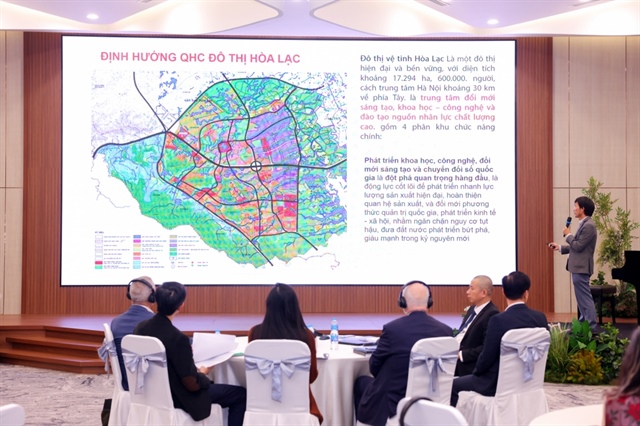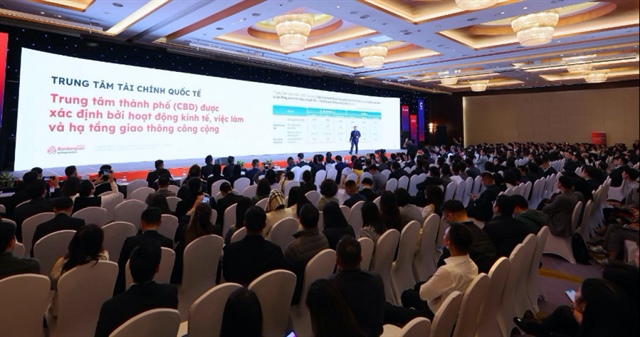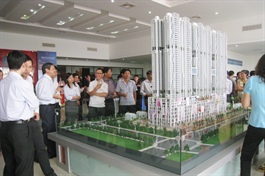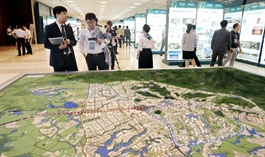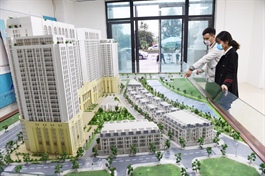Land prices in Hanoi in upward trend
Land prices in Hanoi in upward trend
It is expected that by late 2022, real estate demands would continue to stay low and investors may be forced to lower prices to attract buyers.
The average land prices in Hanoi during the third quarter of 2022 went up by 5% against early 2022 and 20% year on year while demand remained low during the period.
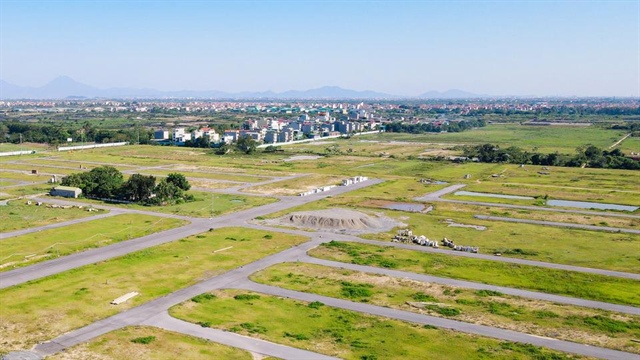
Land prices in Hanoi continue its upward trend. Photo: Hai Linh |
In the past months, there has been a sharp decline in the number of real estate transactions in rural districts such as Dong Anh, Hoai Duc, Me Linh, Quoc Oai, or Thach That.
According to experts, the majority of landowners in these districts are investors, rather than people with actual housing needs. But recent efforts from the authorities in tightening credit into the real estate market have led to lower demand for land purchase.
Data from the real estate website batdongsan.com.vn revealed the search frequency for land in Hanoi declined by an average of 18% in the third quarter compared to the previous one, with a sharp fall seen in Quoc Oai (39%), Gia Lam (28%), or Thanh Tri (24%).
“Since the second quarter, Hanoi’s market for lands has stagnated, especially in districts with high demand in 2021. Market liquidity has been low since the Government’s move to prevent credit from being channeled into high-risk fields,” Vice General Director of batdongsan.com.vn Nguyen Quoc Anh told The Hanoi Times.
Such a trend, however, has not had significant impacts on land prices. A recent survey conducted by the Vietnam Association of Realtors (VARS) suggested land prices in residential areas, especially in urban projects of rural districts, went up by 5% compared to early 2022 and 20% year on year.
In Thanh Xuan Commune, Soc Son District, land prices here were estimated at VND3-7 million per square meter, but since the announcement of the Ring road No.4 project running across the area, the prices have surged to around VND12-17 million.
“Land prices in the commune nearly quadrupled against early 2021, even up to VND40 million for those near major roads,” Ngan Nguyen, a real estate broker at Thanh Xuan Commune, told The Hanoi Times.
Experts, however, suggested investors stay cautious before making any purchase decision, especially with inadequate infrastructure investment in the surrounding areas and the legal nature of lands in these districts.
In a recent land auction in Quoc Oai District, the successful bidding prices were in the range of VND64-77 million per square meter, some even went up to VND99.3 million, nearly double the starting prices.
While the high bidding prices would be beneficial for the state budget, this, however, would cause negative impacts on the average market price and difficulties in the compensation process for site clearance.
It is expected that by late 2022, demands for land would continue to stay low and investors may force to lower prices to attract buyers.
“Market liquidity could go down in case selling prices continue to stay high, and there is high chance investors may have to lower prices by 20-30% compared to the current level,” Economist Dinh The Hien told The Hanoi Times.
Hien warned investors against using financial leverage for land acquisition, saying such an investment should be for the long-term view from three to five years, or even 10 years to bring high profits.
|
The property market in major cities of Hanoi and Ho Chi Minh City continues to attract attention from investors, thanks to the ongoing planning process, but it is unlikely to see a land frenzy similar to past years. In the case of Hanoi, the planning for five rural districts of Hoai Duc, Dong Anh, Thanh Tri, Gia Lam, and Dan Phuong into urban districts by 2025 would create a foundation for local authorities to promote urban development projects, thanks to the huge land portfolio available. So rising land prices in these areas are understandable, said banking–finance expert Can Van Luc. |



